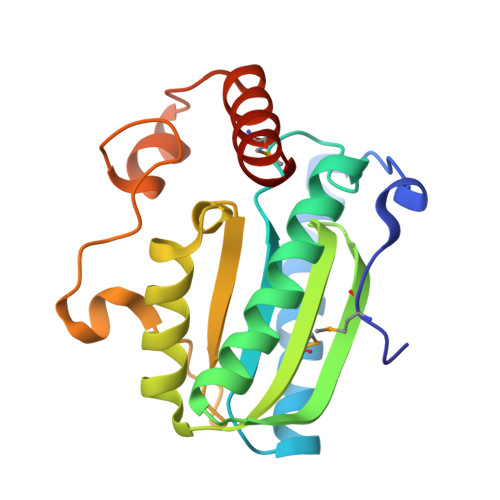Co-evolution-based prediction of metal-binding sites in proteomes by machine learning.
Cheng, Y., Wang, H., Xu, H., Liu, Y., Ma, B., Chen, X., Zeng, X., Wang, X., Wang, B., Shiau, C., Ovchinnikov, S., Su, X.D., Wang, C.(2023) Nat Chem Biol 19: 548-555
- PubMed: 36593274
- DOI: https://doi.org/10.1038/s41589-022-01223-z
- Primary Citation of Related Structures:
7DCM, 7DCN - PubMed Abstract:
Metal ions have various important biological roles in proteins, including structural maintenance, molecular recognition and catalysis. Previous methods of predicting metal-binding sites in proteomes were based on either sequence or structural motifs. Here we developed a co-evolution-based pipeline named 'MetalNet' to systematically predict metal-binding sites in proteomes. We applied MetalNet to proteomes of four representative prokaryotic species and predicted 4,849 potential metalloproteins, which substantially expands the currently annotated metalloproteomes. We biochemically and structurally validated previously unannotated metal-binding sites in several proteins, including apo-citrate lyase phosphoribosyl-dephospho-CoA transferase citX, an Escherichia coli enzyme lacking structural or sequence homology to any known metalloprotein (Protein Data Bank (PDB) codes: 7DCM and 7DCN ). MetalNet also successfully recapitulated all known zinc-binding sites from the human spliceosome complex. The pipeline of MetalNet provides a unique and enabling tool for interrogating the hidden metalloproteome and studying metal biology.
Organizational Affiliation:
Synthetic and Functional Biomolecules Center, Beijing National Laboratory for Molecular Sciences, Key Laboratory of Bioorganic Chemistry and Molecular Engineering of Ministry of Education, Peking University, Beijing, China.
















